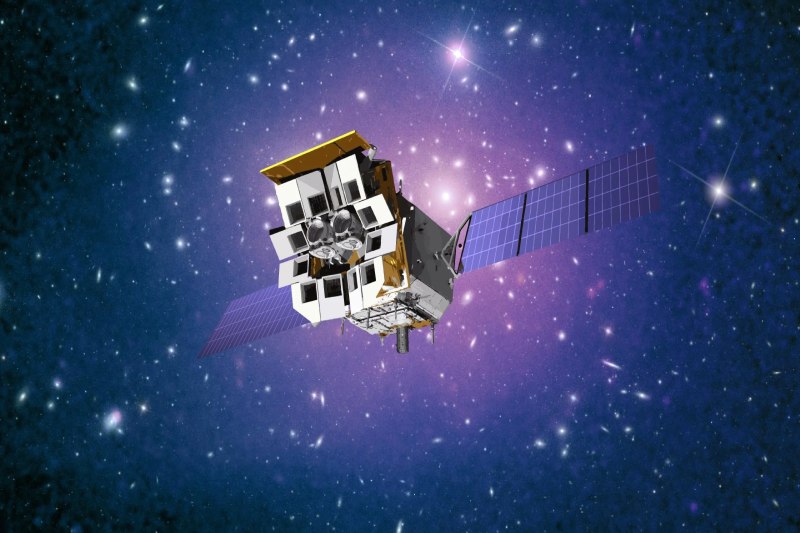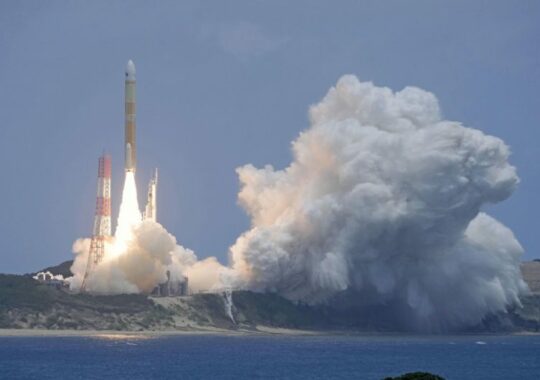China launched its Einstein Probe early on Tuesday with the goal of utilizing cutting-edge optics inspired by lobster eyes to detect X-ray emissions from transient, catastrophic cosmic events.
On January 9, at 2:03 a.m. (0703 UTC), a Long March 2C rocket took out from the Xichang Satellite Launch Center in southwest China. Within an hour, the China Aerospace Science and Technology Corp. (CASC) verified the success of the launch.
A key component of China’s strategic space science endeavors is the Einstein Probe (EP). The spacecraft will observe far-off, violent phenomena like supernovae, tidal disruption events—in which enormous black holes tear stars apart—and identify and pinpoint the high-energy electromagnetic counterparts of gravitational wave events for at least three years.
The probe could shed fresh light on the intricate and uncommon processes of jets of ionized matter formed by gigantic black holes and how stellar matter falls into them by detecting soft band X-ray emissions from stars that are being torn apart by them.
The 1,450-kg EP spacecraft will go in an orbit with a 29-degree inclination and 600-kilometer altitude. From there, a Wide-field X-ray Telescope (WXT) will be used to observe the sky.
WXT’s state-of-the-art “lobster eye” optics enable the probe to see X-ray events wider and more profoundly than was previously feasible. It comes after a demonstration mission in late 2022 of a new lobster eye optics module.
With the combination of 12 tested modules in 2022, WXT offers a 3,600 square degree field of vision. The device employs a reflection method with parallel square pores arrayed on a spherical, modeled after the eyes of lobsters. Radiation from the countless square tubes is directed at a CMOS light detector.
The European Space Agency supported the mission by helping to test and calibrate the WXT’s optical components and detectors.
The data download from EP will also involve ESA ground stations. In order to facilitate the quick transmission of alarm data to the ground, the mission will also make use of China’s Beidou navigation satellite network.
“The strength of Einstein Probe is to observe almost the entire night sky in about 5 hours with great sensitivity, thanks to the lobster-eye technique,” Erik Kuulkers, ESA Project Scientist. “It is thus able to catch any unpredictable transient event in X-ray light.”
“Powered by tumultuous cosmic events, X-ray light from astronomical sources is very unpredictable. Yet, it carries fundamental information about some of the most enigmatic objects and phenomena in our Universe,” Kuulkers explains.
“X-rays are associated with collisions between neutron stars, supernova explosions, matter falling onto black holes or hyper-dense stars, or high-energy particles being spewed out from discs of blazing material circling such exotic and mysterious objects.”
EP has the ability to process data onboard and follow up on its own. This implies that in the event that WXT detects an X-ray incident, the probe’s Follow-up X-ray Telescope (FXT), a more sensitive but narrower-viewing device created in partnership with Europe, can be put to immediate use.
Kuulkers continues, “The field of gravitational wave astronomy is just beginning to emerge, and EP will help determine the source of many of the gravitational wave impulses that are being observed on Earth by allowing scientists to quickly study these brief events.”
In exchange for the agency’s support of the mission, 10% of the data produced by EP will be made available to ESA, according to Kuulkers. The members of the European Einstein Probe Science Team will receive data.
“Their interest is diverse, from auroral emission on Jupiter, to star-planet Interactions through X-ray observations, to outbursts on isolated neutron stars or in binary stars with a neutron star companion, and to the unstable swallowing of matter by supermassive black hole in other galaxies.”
Insight into further phenomena such as red-shifted gamma-ray bursts, active galactic nuclei, magnetars, and comet-solar wind ion interactions may also be gained from EP.
With the launch of its DAMPE dark matter probe in 2015, China started launching dedicated space science missions. The expedition was a component of the Strategic Priority Program (SPP) of the Chinese Academy of Sciences (CAS). In 2017, EP was authorized as a component of the SPP’s second phase.
CAS is now considering a third round of SPP missions that are more expansive. Venus orbiter, asteroid sample return, exoplanet-hunting telescopes, a group of lunar tiny satellites, and more are among the proposals. However, there has been no explanation for the delay in final selections.





